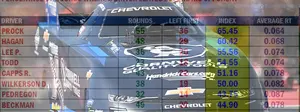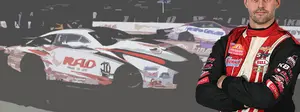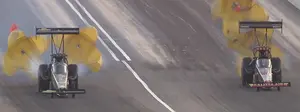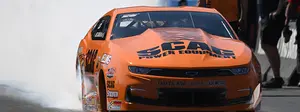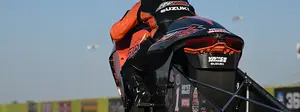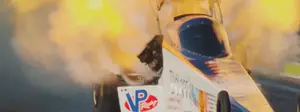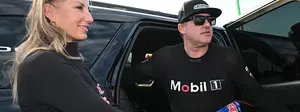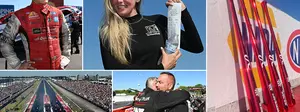

A beginner's guide to the NHRA Summit Jr. Drag Racing League
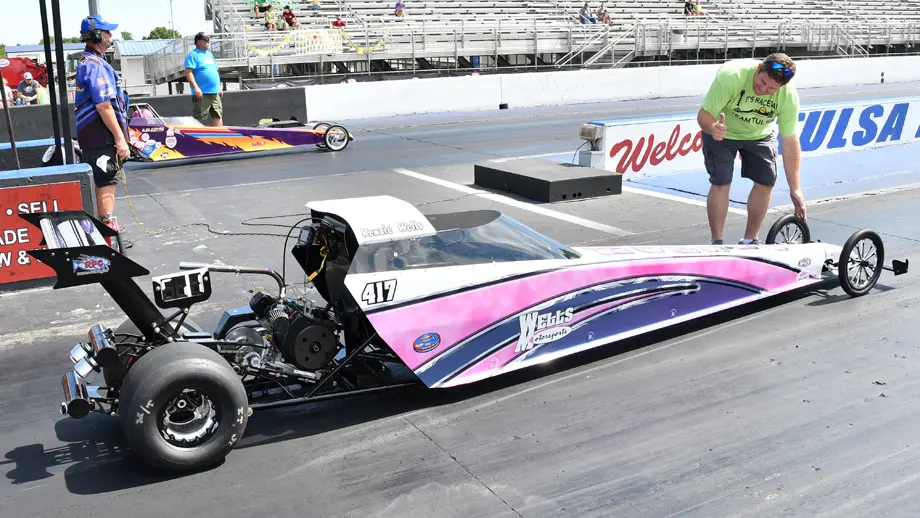
Your child wants to race a Jr. Dragster — now what? Starting out in the NHRA Summit Racing Jr. Drag Racing League can seem daunting at first, but with careful planning and some help, it doesn’t have to be overwhelming. While your first inclination may be to jump online and find a car right away — and don’t get us wrong, buying a car is an important step — it’s actually best to start your quest into Jr. drag racing in a much simpler way: head to a track near you to check out a race, and that’s true whether you have raced in other categories or not because Jr. Dragsters are very unique race cars.
Said Jr. Dragster dad Chad Moss, “For the dads, anything you learned about a ‘big car,’ throw it out of the window. It won’t apply to a Jr. Dragster.”
Finding a Jr. Dragster event is easy. Log onto NHRA.com and click the Track Info link in the menu to find a track near you. Each track determines its Jr. Dragster race schedule, so once you find your closest track, visit its website or call the track (you will find the web address and phone number on the Track Info page) to get a schedule of events.
Why head to the track first? The best source of information on getting started and the ins and outs of the sport are the racers and families within it, and with NHRA Drag Racing’s open pits, that means easy access to the “experts” of the sport. Plan on spending several hours at the track and take in the entire experience. Watch racing from the stands, talk to track employees, and, most importantly, spend a good amount of time in the pits. But don’t just walk around and look at things — spend time with the racers and others working on the cars.
The drag racing community is known as a very welcoming group, and that is particularly true of Jr. drag racers and their families. Jr. Dragster teams are more than happy to answer questions, show off their cars, and, in some cases, will allow kids to sit in their car to get a bit of a feel for a Jr. Dragster and what it’s like inside of one. As you walk through the pits, go up to those who are out in the pit area, say hello, and ask questions. Topics may include advice on essential parts, pieces, and tools you really need to get started (and some items you may not need immediately and can add later), common pitfalls for newcomers, things they wish they had known when they first started, and any technical tips they may have for you. The advice you will get during these visits will be invaluable, and the connections you make here could be very helpful when you start racing and need help as you learn.
***
The next step is to buy a Jr. Dragster and other necessary equipment to get started in the sport. Whether you buy a new car or a used car comes down to preference, but for newcomers, beginning with a used Jr. Dragster has several advantages. The most obvious is cost. You can find quality used Jr. Dragsters for a fraction of the cost of a new one, and in most instances, the used car comes complete, including the engine, which is typically not the case with a new dragster. Some sellers even throw in things like log books and notes that could help with tuning decisions and the learning curve.
If you are looking at used cars, make sure they comply with all rules. The NHRA Summit Racing Jr. Drag Racing League Rulebook is available for free online at jrdragster.nhra.com or nhraracer.com. A few areas with more recent changes you may want to study up on and keep an eye out for are the helmet bars on the upper part of the chassis and the requirement of a steering crossmember, plate, or net designed to retain the driver’s feet. If the car includes an engine, check the approved engine list in the rulebook to ensure the one you are buying is legal. Finally, check the seat belts to ensure they meet SFI Spec 16.1 or 16.2 and that they have not expired (seat belts must be updated every two years). This may not be a make-or-break on purchasing the car, but expired seat belts mean you will have to account for the added expense of getting them updated.
Seat belts are one of many safety items required. Before your kid hits the track for any runs, including their licensing passes, he/she will also need arm restraints, a helmet that is on the approved helmet list in the rulebook, a neck collar or a head and neck restraint device/system, and protective clothing, including a jacket and pants that meet SFI Spec 3.2A/1, shoes, gloves, and socks.
Once you have the Jr. Dragster, safety equipment, and any other parts needed to run the car, you will need a way to get it all to the track, and that comes down to personal preference. While you may have seen some larger trailers in the Jr. Dragster pits during that initial visit, you don’t have to use those as a guide for yourself. In fact, did you know that when the Jr. Drag Racing League started many competitors brought their cars to the track in the back of a pickup truck? There are some racers who still do that or use an open trailer or a toy hauler like those used for off-road vehicles. Figure out what works best for you logistically and financially.
While planning that, keep in mind you will need a pit vehicle to help get your Jr. Dragster from the pits to the staging lanes. Full-size tow vehicles are prohibited in the Jr. Drag Racing League, so you will need a golf cart, scooter, or something similar. A Jr. Dragster may be towed using a tow strap or a front-end dolly; pushing a Jr. Dragster is prohibited. All Jr. Dragsters being towed must have a fluorescent or brightly colored flag that is at least five feet above the ground when attached, so make sure you have that as well.
While the items listed here are some of the essentials, to ensure your child and the Jr. Dragster they will be piloting are fully compliant with all rules, it is best to carefully read the entire rulebook. NHRA’s Technical Services representatives are also available to answer questions during normal business hours. Contact info, including hours of operation, phone numbers, and email address, are at the beginning of the rulebook.
***
Once you have the Jr. Dragster, safety equipment, and other items needed to get started, there’s one more step before your child can officially enter a race: get a competition license. Every Jr. Dragster competitor must have a license to compete, no exceptions.
The licensing process includes several steps to complete, from paperwork to the licensing runs themselves. You can download a paperwork packet that includes full instructions and all required forms online at jrdragster.nhra.com under the League/Race Info menu or request one by phone. One important note on paperwork if you are downloading and printing it: it must be printed in color, not black and white.
Read the instructions at the top of the paperwork carefully to ensure you do not miss anything that is required, such as the two signatures that need to be notarized, the birth certificate requirement, and the physician’s form, which must be filled out and signed by your child’s doctor.
Just like their “big car” counterparts, racers just getting started behind the wheel of a Jr. Dragster must go through a licensing process that includes a cockpit orientation, basic driving test, track orientation, and a series of passes that progress from 60 feet to a full run. All of these require sign-offs by adults who hold a current NHRA competition license or a qualified track official.
Once the licensing process is complete, send your paperwork to NHRA for processing. Part of the processing will include NHRA assigning your child a membership number and the three- or four-digit car number that will be used to identify them in competition. Car numbers are randomly assigned based on availability. Paperwork processing and mailing the license out can take a little time, but that doesn’t necessarily mean you and your child cannot start racing right away. If you want to compete before the license arrives in the mail, contact NHRA’s National Field Office for a temporary license.
























